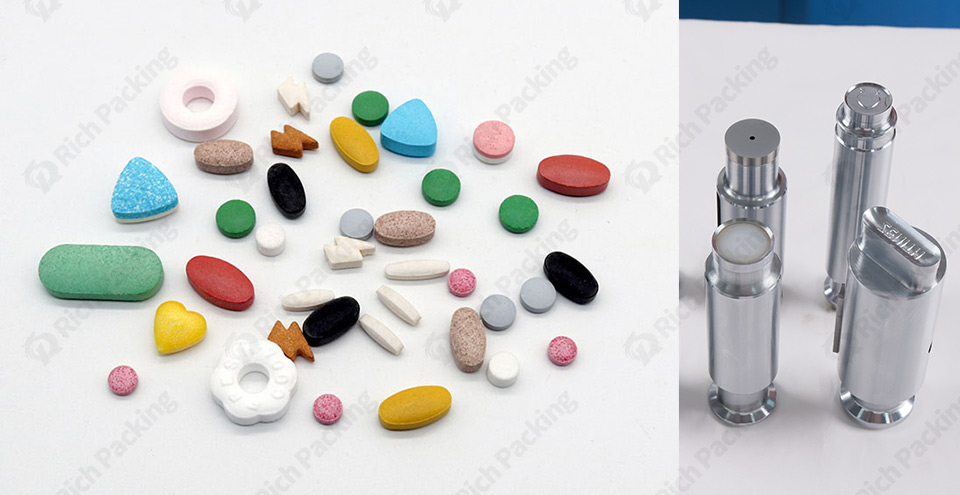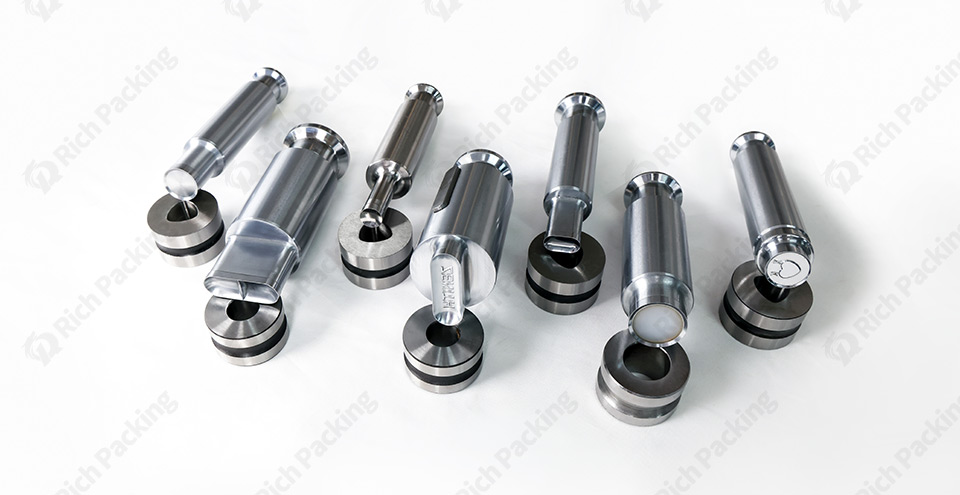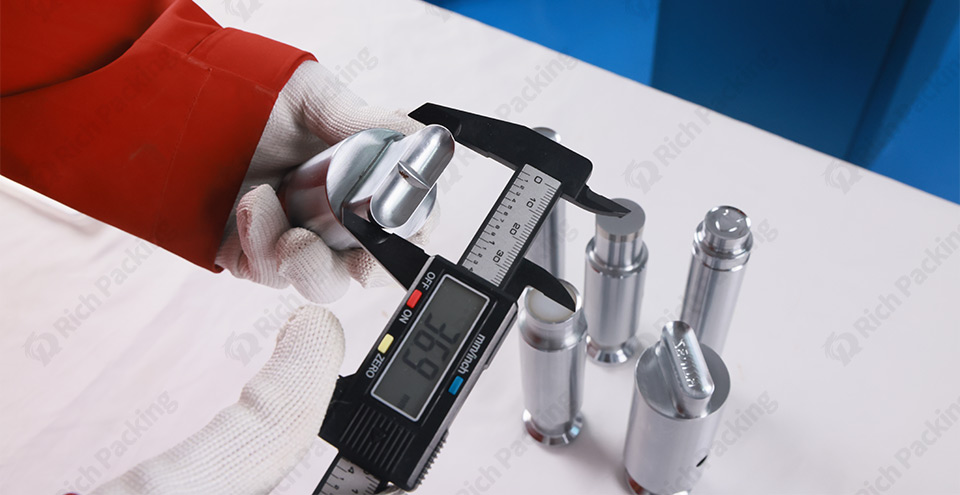En industrias como la farmacéutica, la alimentaria y la producción química diaria, las prensas de comprimidos desempeñan un papel crucial. El componente principal de una máquina prensadora de tabletas El troquel no solo es fundamental para garantizar la calidad del producto, sino también para garantizar la eficiencia de la producción. Sin embargo, el rendimiento de los troqueles de las prensas de comprimidos depende en gran medida del mantenimiento y el cuidado. Un mantenimiento preciso y detallado puede garantizar un rendimiento óptimo de los troqueles, prolongar su vida útil y reducir significativamente el tiempo de inactividad de la producción. A continuación, ofrecemos una descripción general completa de la estructura básica y el principio de funcionamiento de los troqueles de las prensas de comprimidos, junto con una guía detallada sobre el mantenimiento y cuidado profesional de los troqueles.

Antes de profundizar en el mantenimiento y cuidado, es fundamental comprender claramente los componentes principales de las matrices de las prensas de comprimidos y sus funciones. La matriz de una prensa de comprimidos consta de varias piezas clave, cada una de las cuales desempeña una función única en el proceso de producción.
Primero, están el punzón superior y el punzón inferior, que trabajan en conjunto con la cavidad de la matriz (la parte central de la matriz) para comprimir el material en tabletas. A continuación, el alimentador garantiza que el material en polvo se distribuya con precisión en la cavidad de la matriz. Durante el proceso de compresión, las tabletas expulsadas son expulsadas de la cavidad de la matriz por el eyector y finalmente descargadas a través del conducto de descarga.
En cuanto al principio de funcionamiento, la matriz de la prensa de comprimidos adopta un mecanismo de compresión física de alta precisión, que utiliza presión mecánica para comprimir materiales en polvo y formar comprimidos sólidos dentro de la cavidad de la matriz. Este proceso implica un flujo de material complejo y una deformación rigurosa, lo que requiere una matriz de alta precisión y un control estricto de parámetros como la presión, la velocidad y la cantidad de llenado durante la operación.

En la producción diaria, las matrices de las prensas de comprimidos pueden presentar diversos problemas. A continuación, analizamos en detalle estas fallas comunes y las estrategias de prevención y solución correspondientes.
Bloqueo de matriz
Cuando el polvo es demasiado fino o pegajoso, o contiene impurezas, los canales de la matriz pueden obstruirse. En este caso, detenga la máquina, limpie los canales de la matriz obstruidos y verifique si hay desgaste causado por la obstrucción. Granule el polvo demasiado fino o añada materiales de mezcla para reducir la pegajosidad y filtre las impurezas para asegurar el correcto funcionamiento de la tableteadora.
Fallas relacionadas con el material
El exceso de humedad o impurezas en la alimentación puede provocar el bloqueo de la matriz y afectar la calidad de la tableta. Asegurarse de que la materia prima esté seca y limpia es crucial para prevenir estos problemas.
Desgaste de la matriz
Debido a la fricción, la matriz puede desgastarse con el tiempo debido al uso prolongado. Revise periódicamente la matriz para detectar desgaste y aplique lubricantes de alta calidad para su mantenimiento y así reducir el desgaste.
Deformación o rotura de la matriz
Una presión o un impacto excesivos pueden provocar la deformación o rotura del troquel. Reemplace inmediatamente los componentes dañados del troquel, ajuste los parámetros de la tabletificadora y revise el polvo de la materia prima para evitar que vuelva a ocurrir.
Fatiga del metal
La producción repetida puede provocar fatiga del metal, causando grietas o incluso roturas. Realice pruebas de tensión periódicas y prevea la vida útil del molde para predecir y controlar eficazmente la fatiga del metal.
Fallas mecánicas por funcionamiento inadecuado
Los hábitos de operación inadecuados, como el uso de presión o velocidad excesivas, pueden dañar la matriz. La capacitación regular y el ajuste preciso de los parámetros mecánicos son cruciales para prevenir estos problemas.
Limpieza regular
La limpieza después de cada tirada de producción es el primer paso para prevenir fallos en el troquel. Utilice un cepillo suave y productos de limpieza adecuados para eliminar el polvo y los residuos. Evite el uso de cepillos duros para evitar dañar la superficie del troquel.
Inspección y reemplazo
Inspeccione cuidadosamente la matriz para detectar grietas por fatiga o desgaste significativo y reemplace los componentes según sea necesario. Un reemplazo oportuno puede evitar que pequeños problemas se conviertan en fallas graves.
Lubricación
Lubrique regularmente las piezas móviles del troquel para reducir el calor y el desgaste causados por la fricción. Elija los lubricantes adecuados según las recomendaciones del fabricante.
Calibración
Una presión uniforme y una velocidad adecuada son cruciales para maximizar la vida útil del molde. Calibre con precisión los parámetros de la tableteadora cada vez que reemplace un molde o produzca un nuevo producto.
Evite largos períodos de trabajo de alta intensidad
El trabajo continuo de alta intensidad acelera el desgaste y los daños de las matrices. Organice los horarios de trabajo de forma razonable para evitar operaciones prolongadas con cargas elevadas.
Capacitación de operadores
Los operadores deben recibir capacitación profesional para comprender los principios de funcionamiento y los puntos de mantenimiento de las matrices de las prensas de comprimidos. Siga los procedimientos durante la operación para evitar daños por manipulación inadecuada.
Registros detallados de mantenimiento
Mantenga registros detallados de cada sesión de mantenimiento y cuidado. Esto facilita el seguimiento del estado del troquel y la predicción de posibles problemas.
Implementar capacitación regular
Realizar sesiones de capacitación periódicas para los operadores para mantenerlos actualizados sobre las últimas técnicas de mantenimiento y procedimientos de operación segura.
Con el avance de la fabricación inteligente, el mantenimiento de las matrices de las prensas de tabletas también se está volviendo más inteligente y automatizado. Las siguientes soluciones innovadoras ilustran esta tendencia:
Sistemas de monitoreo remoto
Mediante la instalación de sensores y dispositivos conectados, los técnicos pueden supervisar el estado de funcionamiento de las matrices de las prensas de tabletas en tiempo real, incluyendo la temperatura, la presión y la velocidad. Esto permite el diagnóstico remoto de averías y la orientación para el mantenimiento.
Software de mantenimiento predictivo
Al utilizar big data y algoritmos de aprendizaje automático, el software de mantenimiento predictivo puede pronosticar con precisión las necesidades de mantenimiento y los tiempos de falla de las matrices de prensas de tabletas, lo que ayuda a crear planes de mantenimiento más efectivos que maximizan la eficiencia de la producción y reducen los costos de mantenimiento.
Sistemas autónomos de limpieza y lubricación
Las tableteadoras avanzadas están equipadas con sistemas automáticos de limpieza y lubricación que permiten limpiar y lubricar periódicamente las matrices sin interrumpir la producción. Esto mejora la eficiencia y la precisión del mantenimiento.

El mantenimiento y cuidado de las matrices de las prensas de comprimidos es fundamental para garantizar la continuidad de la producción y la calidad del producto. Mediante la adopción de tecnologías avanzadas, soluciones de mantenimiento innovadoras y técnicas prácticas, podemos mejorar significativamente la eficiencia del mantenimiento, prolongar la vida útil de las matrices y garantizar una producción estable y eficiente. En el futuro, con el continuo progreso tecnológico y el aumento de la inteligencia, el mantenimiento de las matrices de las prensas de comprimidos se volverá más científico y refinado, lo que contribuirá a que cada etapa de la producción logre una transformación eficiente y de alta calidad.
Esperamos que el contenido anterior le sea útil. Si tiene alguna pregunta o necesidad técnica adicional, no dude en contactarnos. Contáctanos .